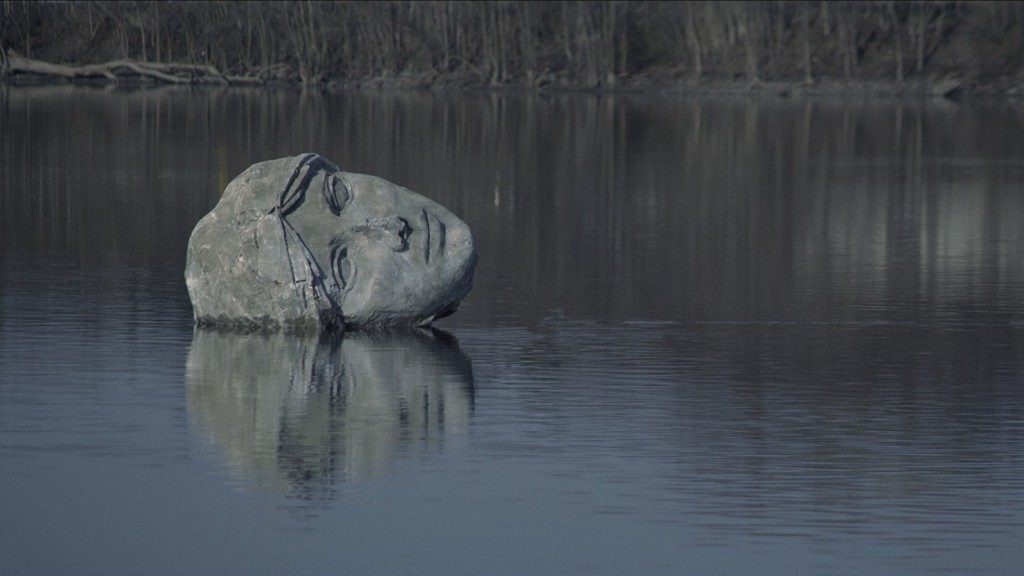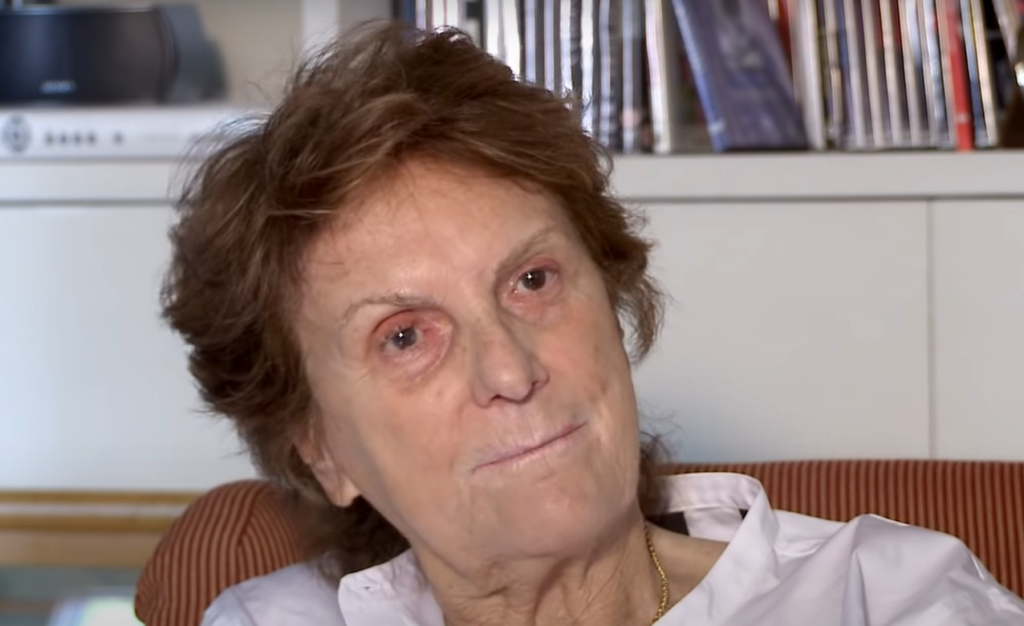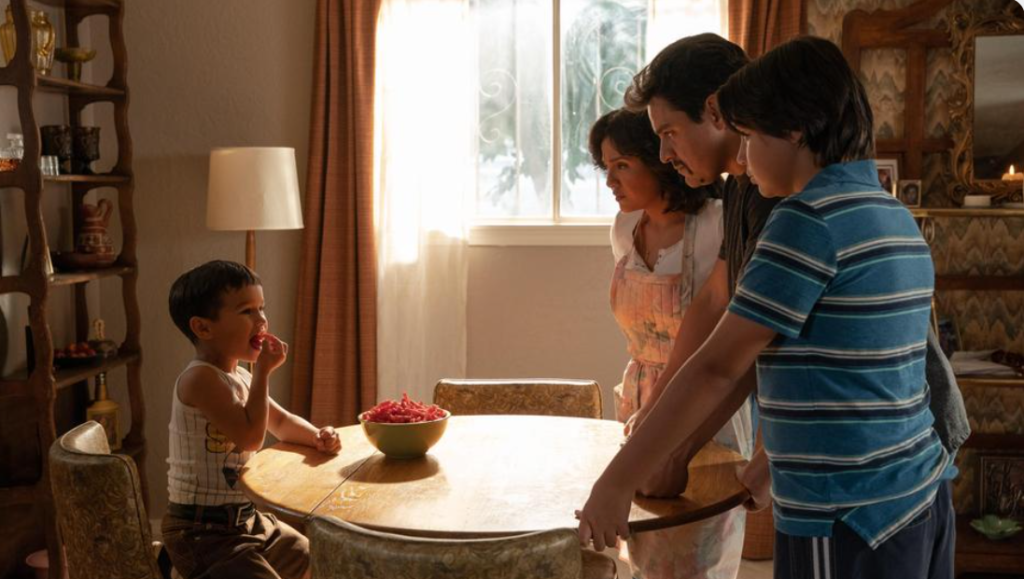Rania Attieh & her H. co-director Daniel Garcia were named the 2015 Independent Spirit Awards’ “Someone to Watch.” Included among the “25 Faces of Independent Film” by Filmmakers Magazine in 2011, they are also 2014 Guggenheim Fellows and 2012 U.S. Rockefeller Fellows in film. Attieh and Garcia have co-written, co-directed, co-edited and produced many films to date. Their films have screened at the Forum des Images in France, the Metropolitan Museum of Art in New York City, MoMA, the Walker Art Center, and many prestigious film festivals around the world. (Press materials)
H. will premiere at the 2015 Sundance Film Festival on January 25.
W&H: Please give us your description of the film playing:
RA: H. is a mysterious, modern interpretation of a classic tragedy in which two women, each named Helen, live mirrored lives in the town of Troy, NY. The first Helen is in her 60s, lives with her husband, and takes care of an eerily lifelike baby doll called a “Reborn Doll,” which she cares for as though it were alive. The second Helen is in her 30s, has a successful art career, and is four months pregnant.
One night, something unexplainable falls out of the sky and explodes over the town. In the aftermath of this event, bizarre and unexplainable things begin to happen. As people in the town go missing en masse and unnatural cloud formations begin appearing in the sky, the two women find themselves and their lives spinning out of control.
W&H: What drew you to this story?
RA: Two years ago, while traveling in South America, I found myself in a toy store specializing in antique collectibles and rarities and happened upon a strange sight. In the window was what looked like a real, living, newborn baby. I approached the window and was amazed to realize that it was in fact a doll.
After some research, I [entered] the world of “reborn doll” culture and was completely fascinated. I then shared this finding with Daniel Garcia [who co-wrote and co-directed H.], and he was equally as interested. Soon, we were hooked on the idea of somehow building a character in a film [based] on one of the women that participates in this culture. We began writing, and soon realized that we wanted to have a film with two women protagonists, so we began developing a somewhat parallel story involving a second woman.
Overall, many of the narrative elements in H. are loosely based on real-life events that we happened to come across either in research or simple, everyday Internet whimsy — events that share the same overall absurdity that sometimes is present in normal life. Everything from the meteor explosion, the reborn doll culture, the large Greek statue head that floats down the Hudson river — these were all based on real-life events that seem to stretch the imagination, so to speak.
We also knew we definitely wanted to infuse into the narrative the relation of women at different ages with motherhood, their relationship with their babies versus their partners’, their overall “need” to have children, their fears and projections on their children, etc. All of this we put into a pot, if you will, and simmered for a while until we had what made sense to us.
W&H: What was the biggest challenge in making the film?
RA: Time was by far the biggest challenge in the completion of this film. The film was made as part of the Venice Biennale College — Cinema program, which selected three films to receive a production grant, mentorship, and a guaranteed screening during the Venice FIlm Festival. While amazing, what this meant is that we basically had to make a film in well under a year to make the Venice August deadline. We have, quite literally, never worked so intensely for such a sustained period of time, and it was brilliant but utterly exhausting.
We’ve made other films that would not have been such a stretch at this timeline, but H. is a very different film for us, with many more moving parts and much greater ambition. We had horses and crowds and forest days in a foot of snow (it was the worst winter ever), and a post-production tour-de-force that included travel to Argentina for VFX work and a rather complicated sound design and mix, not to mention a ton of score from four different composers that were scattered all over the world — all having to come together just 4 months after shooting. 4 months.
Granted, we’ve had the time now, after Venice, before Sundance, to go back and tinker here and there with elements that were perhaps a bit rushed, but the film was by and large made in a pressure cooker of bitter cold, sleepless nights, and not enough days.
W&H: What do you want people to think about when they are leaving the theatre?
RA: Ultimately, we want to provide people with a unique experience, and an unexpected one as well. We’d like people to leave the theater having questions, being intrigued, wanting to know more, and forming their own opinions about the characters and the world we created. We’d like the film and its images to stick around in people’s heads, possibly be recalled every time the letter “H” comes up in everyday life.
W&H: What advice do you have for other female directors?
RA: My biggest advice for women writer/directors is to always be attempting to make work that avoids pandering to the conceptions that the industry has put in place for “women directors.” What I mean by this is to seek out making films that are unique and insightful, boundary-pushing and genre-bending, and not films that fit into the neat, little boxes that people “want” (expect) women to be making. In some ways, I guess for me, any filmmaker should strive to be a good director first, regardless of their gender, race, sexual orientation, etc.
W&H: What’s the biggest misconception about you and your work?
RA: This is an interesting question. I myself am Lebanese, while Daniel (my directing partner who I’ve made all my films with) is Latino. Our first feature film was made in Lebanon, and our second was made in South Texas on the border of Mexico. Both of these films spoke, in their own unique ways, heavily about our connections to our cultures and our experiences, but were, by and large, not “typical” films from these regions.
In other words, our Lebanese film was not “Lebanese” (it didn’t necessarily speak about problems dealing with war, religion, politics, etc.), and our Latino film wasn’t entirely “Latino” (it didn’t necessarily speak about border-crossing, drugs, immigration, etc.). And although these films have done relatively well for us, at times we have definitely felt the confusion of the outside looking in on us, curiously asking us why we haven’t continued making films in Lebanon, or strictly about Latino life. But the reality is that we simply have too many ideas and we want to try them all.
We don’t want to make only one type of film, and sometimes we feel like people might want or expect us to in order to fulfill the status quo. Perhaps not surprisingly, then, H., is neither a “Lebanese” nor a “Latino” film, but it also somehow still both.
W&H: How did you get your film funded? Share some insights into how you got the film made.
RA: We applied with a simple treatment to a program called the Venice Biennale College — Cinema that was part of the Venice Biennial and Venice Film Festival. They chose 12 projects from around the globe to go through mentoring and workshops for ten days, ending with a pitch and a script submission. Then they chose 3 projects for funding support with a micro-budget, and the film had to be produced for a specific sum and be ready in 7 months.
W&H: Name your favorite woman-directed film and why.
RA: It’s extremely hard to name just one, but ultimately I am drawn to films by female directors who write female characters that are surprising, unique, and daring — films that transcend gender and genre while still managing to maintain an extremely feminine, elegant aesthetic. A few examples might be La Cienaga by Lucrecia Martel, Attenburg by Attina Tsangari, and Daisies by Vera Chytilova.







